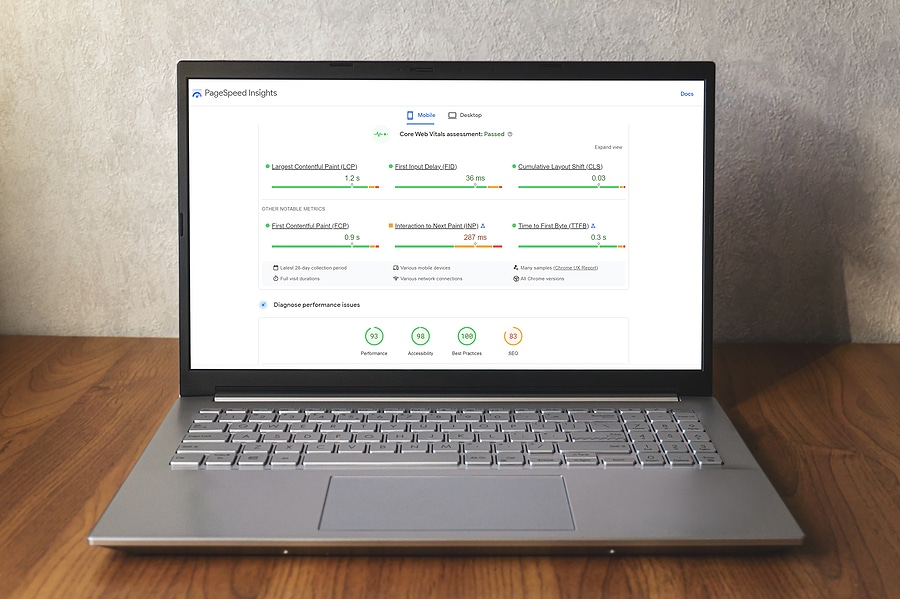
5 Steps to Creating a Content Marketing Strategy Framework
By Jocelyn Van Saun
June 13, 2023
Create Great Content, Convert New Customers
Want to boost the revenue of your business? You need to get a steady stream of new customers. But as you know, this takes more than a snap of your fingers.
When you market your business effectively, you can reach new customers and make it easier for them to decide to do business with you. Maybe it’s advertising online or through direct mail, or asking for customer reviews and referrals. Or maybe it’s engaging in any number of other marketing tactics that can get that next new customer in the door.
One tactic to prioritize is content marketing. As many as 70% of B2C marketers rely on content marketing as a big part of their overall marketing strategy. For those that say content marketing has been successful for them, the top reason why is the value the content provides to the consumer.
To ensure potential customers engage with your business before they ever consider the competition, you must deliver valuable, consistent content that inspires them to take the next step. How do you ensure your content is hitting the mark? First, make sure you’ve got a content strategy in place.
With a successful content marketing strategy that works for your business, you can generate a whole bunch of qualified leads with the potential to convert into new customers.
Here’s how you can get started.
What is a Content Marketing Strategy Framework?
A content marketing strategy framework is the practical mold for how you think about, create, distribute, and measure the results of the content you produce so you can achieve your business goals, however you define them.
With a solid strategy in place, you can capture the audience you’re seeking and adapt to the changing ways your audience consumes information. If your audience starts posting more often on social media about their home improvement experiences — good or bad — you can relate to them with relevant posts. If many of them tend to have the same type of roofing problem, you can be ready with a blog on your website that answers their questions and gives them a solution.
Bottom line: getting in front of them — and staying in front of them — with quality, SEO-focused content that gives them the exact information or solution they need gives you an advantage over the competition and establishes your own authority and credibility with your audience.
Let’s dive in.
5 Steps to Creating a Content Marketing Strategy Framework
Follow these five steps to create a content marketing strategy framework that guides your to your lead generation goals:
1. Identify your target audience
Sure, you may already know that, in general, your audience is the people who are ready to take the plunge on a home improvement project. But what else is important to know about them, so you can produce the kind of content that attracts their attention?
At a high level, identifying your audience’s basic demographics — like age range, location, gender, and even budget — is a great place to start. But you can sub-segment even further by asking:
- What are the pain points of your target audience when it comes to a home improvement project? Is it the time commitment, going over budget, shoddy work, or something else? In other words, what are they struggling with that your business has a solution for or can do better than anyone else?
- Who are you most likely talking to? Is it the decision maker who will ultimately greenlight the project? Or is it the influencer — someone in the household whose idea the project was in the first place but who may not necessarily control the budget side of it? Or is it both?
Understanding your audience on a deeper level helps you differentiate your business from others and craft specific messages that will resonate with whomever you’re talking to.
Key takeaway: When you know your audience, you can speak their language.
2. Define your content strategy framework goals
Every business is a little different in the results they want to see. To understand if your content marketing strategy is successful, you first need to define what success looks like to you and come up with some concrete goals.
Your goals could be any or all of the following:
- Increase traffic to your website or physical store
- Rank on the first page of search engine results for more keywords
- Generate more qualified leads for your business
- Convert more leads to actual customers
Then, take these goals and get very specific. What spot do you want to get to next in the search results? How many additional leads do you want to generate each month? How many conversions?
Specificity will help you keep your eye on the ball and measure whether or not you made it to home base.
Key takeaway: Decide what you’re aiming for so you know how to get there.
3. Set your content strategy priorities
Based on the goals you defined above, the next step is to choose your content marketing framework priorities — i.e., decide what type of content you’re going to produce and optimize first to help you reach your goals.
For example, let’s say you want to increase traffic to your website or store. One idea is to:
- Start by creating landing pages in your website’s content management system that highlight commercial keywords — think of specific brand names or services you provide, like “entry door installation” — as well as transactional keywords like “schedule” or “buy” that are aimed at increasing conversions.
- Then, supplement your content creation on landing pages by creating content formats such as a blog post that use informational keywords — think of words someone would use if they’re searching for information or an answer to their question — to further engage with and educate your audience at this informational stage of the buyer’s journey.
Content formats that work together — like landing pages and blogs — can give you the one-two punch you need to show potential customers the depth and variety of your products and services and that you have the expertise and experience to back them up.
Key takeaway: Focus your efforts to waste less of your time.
4. Measure your results
With your own content marketing strategy in place, you now need to analyze and measure its results.
If increasing traffic to your website is the goal, you can track and better understand the visitors that come to your site and the search queries they’re using with tools like Google Analytics and Google Search Console.
You can also use a paid keyword tool like SEMrush to:
- Compile a list of national and local keywords
- Regularly audit your keywords and search engine optimization (SEO)
- Track your search engine results page (SERP) positions
If something is working, do more of that. If something isn’t working, change it up.
And here’s a hint: Partnering with a digital marketing agency like Socius Marketing, with experts in content marketing frameworks, SEO, and other digital marketing strategies, can help you make sense of your results and steer you in the right direction.
Key takeaway: To understand your return on investment, first understand your results.
5. Create a content calendar — and stick to it
Finally, it helps to plan how often you’re going to create content and publish it on your website. Sticking to a consistent plan helps you avoid getting distracted and dropping the ball — making it that much harder to measure your results and truly understand how well your content marketing strategy is working.
But if you’re going to follow one rule, it’s this: quality over quantity. The vast majority of marketers (83%) say that it’s more effective to aim for higher-quality content less often. Whether that’s once a week for you, or once a month, what you put out there needs to be useful and relevant so you can establish your business as the go-to source for any potential customer’s home improvement needs.
Key takeaway: Consistency, consistency, consistency. Did we say consistency?
Need Some Help?
When you follow these five steps to creating a content marketing strategy framework, you can produce quality, SEO-focused content that increases qualified leads for your business and results in more conversions.
We also understand that creating content takes time and effort, but with the right guidelines and expert help along the way, you can make this tried-and-true marketing tactic work for you.
Ready to take advantage of these ideas? Socius Marketing’s team members are experts in the home improvement market and will craft a winning digital content strategy for your business.
Schedule a consultation to learn more about how to maximize your existing lead generation sources — and how to create some new ones with quality content marketing efforts.


